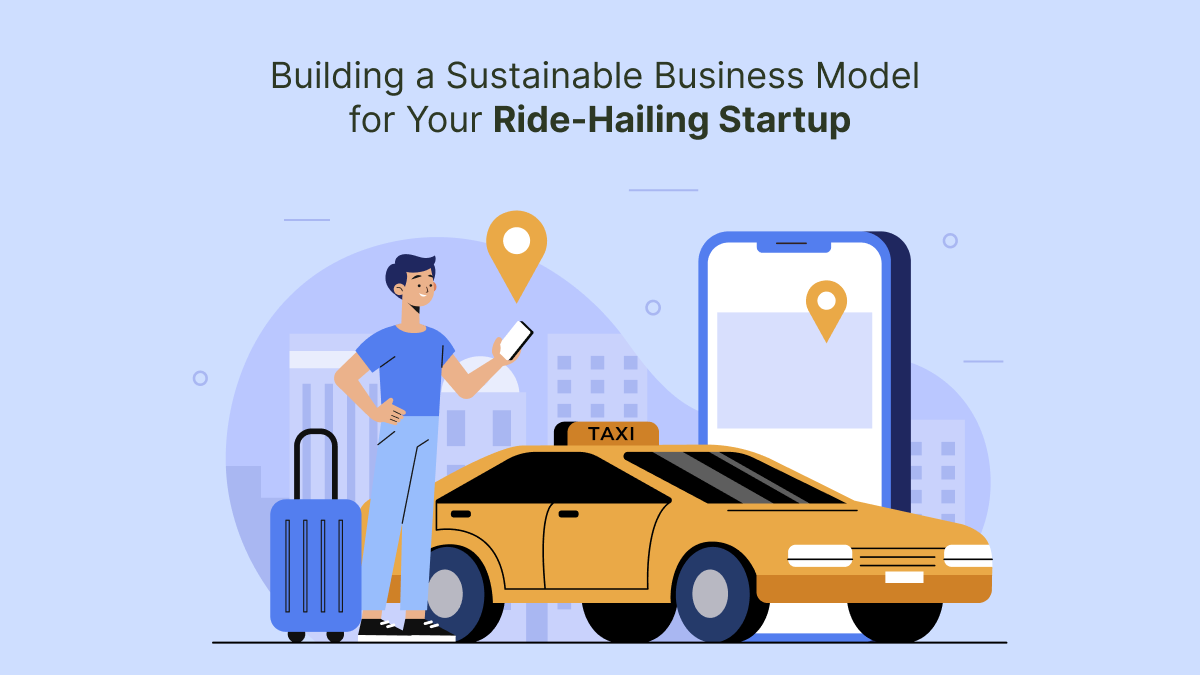Ride-hailing services have changed the way people move around cities. With just a few taps on a smartphone, anyone can book a ride to work, home, or anywhere else. Big players like Uber, Ola, and Bolt have proven that this market is not just popular but also full of opportunities.
However, launching a ride-hailing startup is only the beginning. To make sure your business lasts in the long run, you need more than just a functioning app and a few drivers. You need a clear, well-planned, and sustainable business model.
In this blog, we’ll walk you through the key elements that help build a ride-hailing business that’s not only profitable but also long-lasting.
What is a Business Model?
Understanding the Basics
A business model explains how your company makes money. It includes your target customers, how you deliver services to them, and how you generate revenue. In ride-hailing, this includes the app, the drivers, the riders, payment systems, pricing, and how you grow the business.
A sustainable business model goes beyond quick profits. It considers long-term growth, customer satisfaction, driver earnings, operating costs, and your ability to handle competition.
Step-by-Step Approach to Building a Sustainable Ride-Hailing Business Model
Start with the Right Market
Before launching, choose your target market wisely. Not every city or region is the same. Look at the population size, public transport options, smartphone usage, and current competition. It’s often smarter to launch in a mid-sized city where the demand is high but big competitors are not yet dominant.
Focus on understanding what local people need. Maybe there’s a shortage of taxis at night, or there’s no ride option for elderly people. These small gaps can be great entry points for your startup.
Define Your Customer Segments
Every ride-hailing app doesn’t need to serve everyone. Decide if you want to target daily commuters, tourists, students, working professionals, or even businesses that need employee transportation.
Clear customer segmentation helps you plan your app features, pricing, and marketing in a more focused way.

Decide on a Revenue Model
You need a clear and simple way to earn money. Here are a few options commonly used in ride-hailing:
- Commission-based model: You take a percentage of the fare from each trip completed by the driver.
- Subscription model: Drivers pay a fixed fee weekly or monthly to use your platform.
- Dynamic pricing: Prices change based on demand, allowing you to earn more during peak times.
- In-app advertisements: Extra revenue by displaying ads within the rider or driver app.
You can even combine more than one model as you scale.
Build a Driver-Friendly System
Drivers are the backbone of your platform. If they don’t earn well or find the app difficult to use, they’ll quickly leave for other services. Offer fair payouts, easy onboarding, incentives for completing more trips, and flexibility in their schedule.
A happy driver provides better service, which leads to satisfied riders and more repeat bookings.
Balance Pricing for Riders
Pricing is sensitive in the ride-hailing industry. If it’s too high, users may drop off. If it’s too low, you’ll lose money and drivers won’t be motivated. Create a pricing model that balances affordability for riders and fair earnings for drivers.
Use tools like discounts, promo codes, and referral programs wisely to boost usage without burning through your budget.
Use Technology to Improve Efficiency
Your app should make everything simple and smooth for users and drivers. Features like GPS tracking, fare estimates, secure payment options, in-app chat, and rating systems improve trust and experience.
Also, use the admin panel to monitor operations, manage disputes, and make data-driven decisions.
As you grow, explore technologies like AI-based route optimization or machine learning for better demand forecasting.
Focus on Customer Support and Safety
Customers will only use your service regularly if they trust it. Add basic but important safety features like live ride tracking, SOS buttons, and driver identity verification.
Also, provide quick customer support through chat, call, or email so users feel heard and supported.
Keep an Eye on Your Costs
Startups often fail because they burn money too fast. Track your spending on driver acquisition, app development, customer support, and marketing. Use automation wherever possible to reduce manual work.
Work with local vendors, use cost-effective cloud hosting, and avoid adding too many services too quickly.
Growth Strategies for Long-Term Success
Expand Slowly
Don’t rush into launching in multiple cities. Start small, learn from your mistakes, improve the app, and then move to other regions. It’s better to be strong in one area than be average in many.
Collect and Use Feedback
Ask users and drivers for feedback regularly. Use their suggestions to improve the app and service. This creates loyalty and helps you avoid costly mistakes.
Partner with Local Businesses
Forming partnerships with schools, offices, hotels, or event organizers can help you get steady business. Offer corporate ride packages or scheduled transportation solutions.
FAQs
Is the ride-hailing market still open for new startups?
Yes. There are many untapped regions and niche markets like women-only rides, rural ride-sharing, or corporate travel that still need good solutions.
How much does it cost to build a ride-hailing app?
It depends on the features and the tech team. Using a white-label solution can reduce costs significantly while still giving you a full-featured app.
What’s the biggest challenge in this business?
Driver retention and managing operating costs are two of the most common challenges. A sustainable model focuses on solving both.
Can I include other services in the future?
Yes. Many ride-hailing apps later add delivery, rentals, or logistics services. Plan your app to be scalable from the start.
How do I get drivers to join my platform?
Offer good incentives, flexible schedules, and simple onboarding. Treat them with respect and provide regular support.

Conclusion
Building a ride-hailing startup is not just about launching an app. It’s about creating a complete business model that works for users, drivers, and you as the owner. Focus on finding the right market, offering fair pricing, supporting your driver community, and using technology to run your operations smoothly.
The key to long-term success lies in listening to your users, controlling your costs, and scaling smartly. If you’re not sure where to begin, working with a trusted on-demand mobile app development company can help you bring your idea to life with the right technical foundation and ongoing support.
A solid business model backed by a reliable app is the formula you need to build a sustainable ride-hailing startup that lasts.


